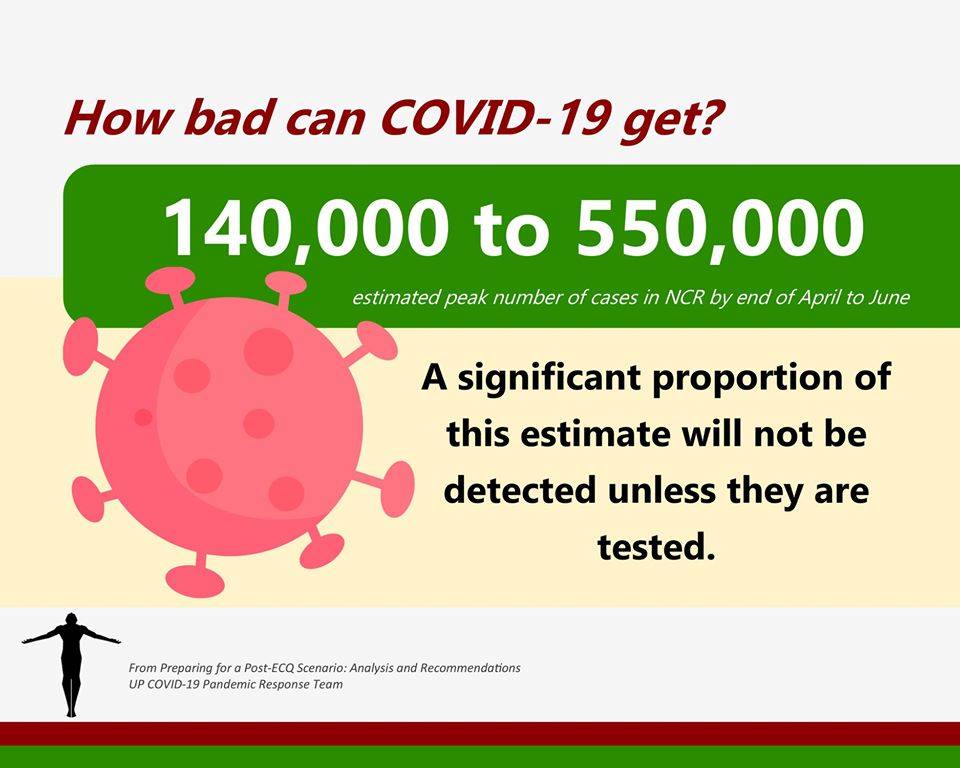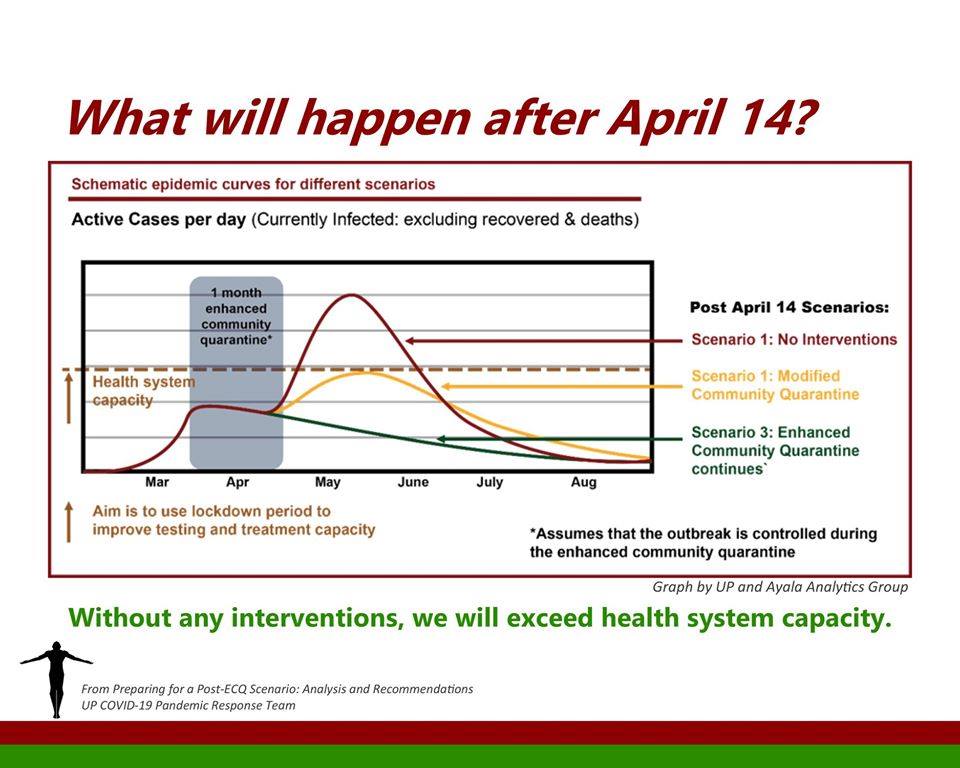UP experts project COVID-19 curve peak to occur between end of April to June

| Grabbed from the UP Resilience Institute Facebook page
CEBU CITY, Philippines—The University of the Philippines (UP) COVID-19 Pandemic Response Team has projected that the peak of the coronavirus disease 2019 (COVID-19) curve would occur by the end of April or in June yet.
The team, composed of experts and mathematicians doing simulations on the spread of the coronavirus 2019, also estimated that the virus will infect between 140,000 to 550,000 people in Metro Manila alone, according to the team’s report entitled “Preparing for a Post-ECQ Scenario: Analysis and Recommendations.”
One modelling group, UP Diliman ModApp, used the Susceptible-Exposed-Infectious-Recovered (SEIR) predictive modelling. The group estimated a peak size of 250,000 to 550,00 infected cases in April.
The University of the Philippines Los Baños (UPLB) Biomathematics team used the SEIR modelling, which refers to the number of Susceptible individuals, the Infected individuals and the Recovered individuals at the provincial city-level population density based model. The team projected that the infected cases could peak between 140,000 and 320,000 for the period of April to June.
Meanwhile, Dr. Darwin Bandoy of the School of Veterinary Medicine at UP Los Baños and the University of California Davis who also used the SIR Model estimated the peak at 250,000 infected persons by the end of June.
The report noted that other groups have conducted their own simulations using different parameters and assumptions. These simulations reveal much higher numbers of infected persons ranging from 1.5 to 4 million for Metro Manila and 23 to 29 million for the whole country.

Grabbed from the UP Resilience Institute Facebook page
The UP report clarified that their projections include both detected and undetected cases. It added that a significant proportion of these estimates will not be detected unless they would be tested.
The estimates would serve as a guide for testing capacity requirements as well as hospital bed capacity requirements.
The UP simulations also showed that non-medical interventions could help contain the spread of the virus and flatten the curve to allow healthcare system to cope with the cases of infected individuals.

Grabbed from the UP Resilience Institute Facebook page
These interventions include the extended community quarantine such as work and school shutdown, the requirement of face masks (even homemade masks with filter), washing of hands, and social distancing.
“Community quarantine buys us time to beef up our healthcare system’s capacity, while limiting the reach of the disease. Thus, a modified, location-specific quarantine scenario can be explored in light of public healthcare realities on the ground (e.g. number of ventilators, hospital beds) and possibly different peak periods across LGUs throughout the country,” the UP report pointed out.
The report also suggested more detailed information gathering through online survey forms to be used by local government units to input data at the barangay level on a daily basis to improve the simulations.
Meanwhile, hospital information on the number of people tested, recovered and other critical data for modeling have to be collected without delay to improve the analysis of the situation, and, to determine where the local community quarantine could be implemented.
The report also calls for contact tracing using technology for rapid collection of data, such as the system developed by UP and its partners, which is now ready for deployment.
On the other hand, the report also urged the government to continue measures to minimize the economic hardship of Filipinos, especially those living below the poverty line and those who could not work due to the current situation.
“COVID-19 is not an invisible enemy. It leaves behind traces of itself, which we can use to get ahead of the curve and stop it in its tracks. But to get there, we have to gather—and share—as much data as possible, apply the best science available, and ultimately listen to what the numbers could tell us,” the report concluded. / dcb
Disclaimer: The comments uploaded on this site do not necessarily represent or reflect the views of management and owner of Cebudailynews. We reserve the right to exclude comments that we deem to be inconsistent with our editorial standards.

